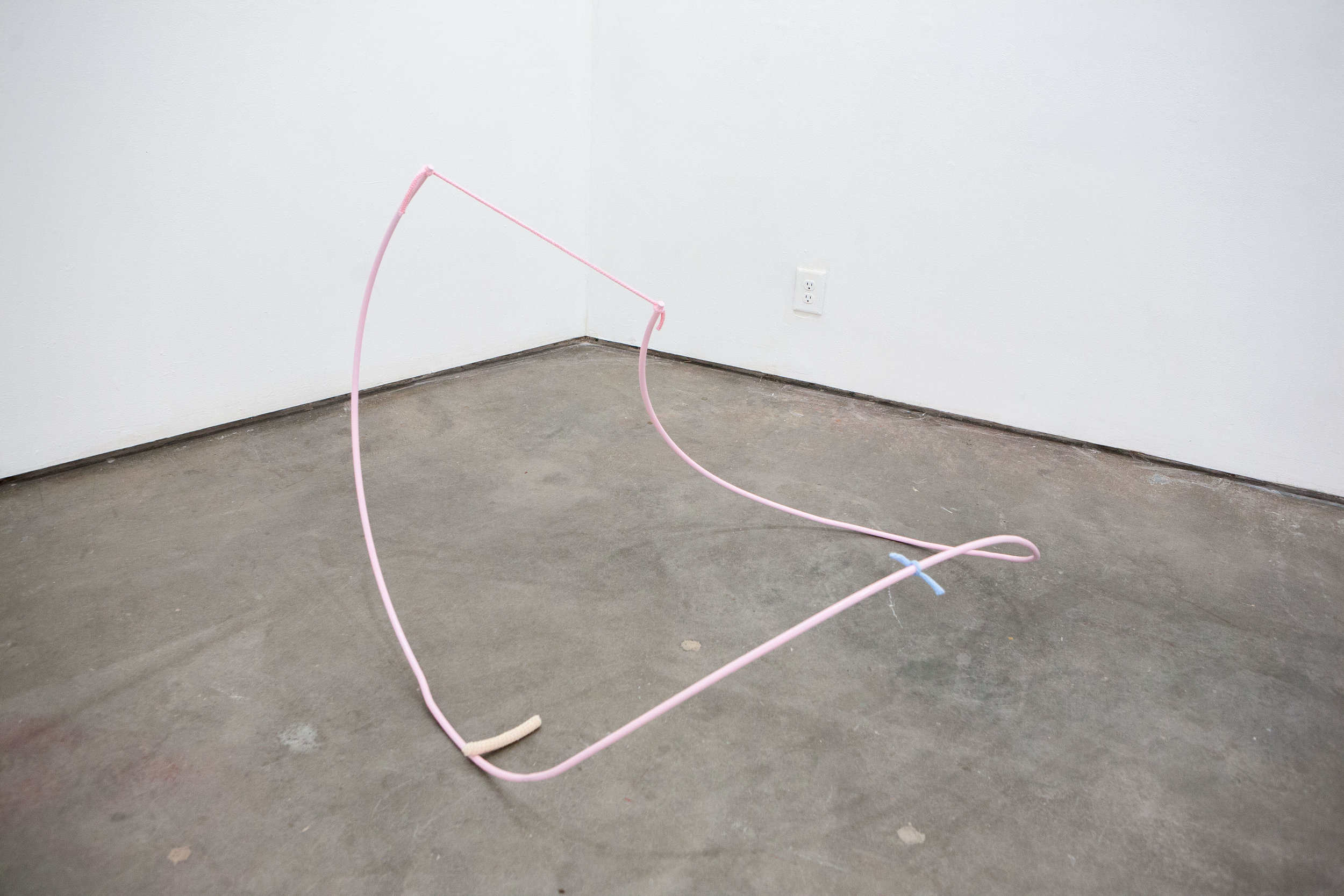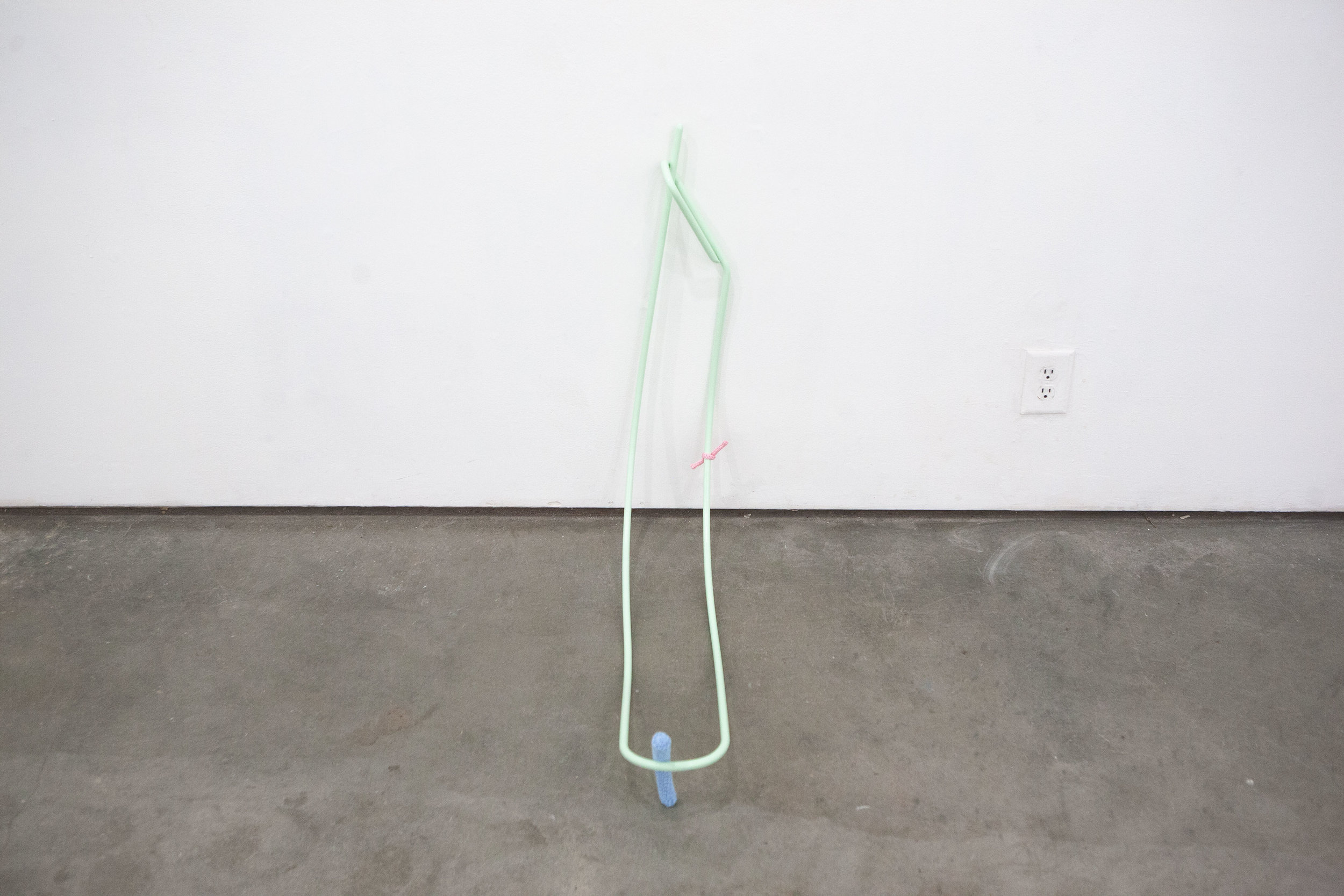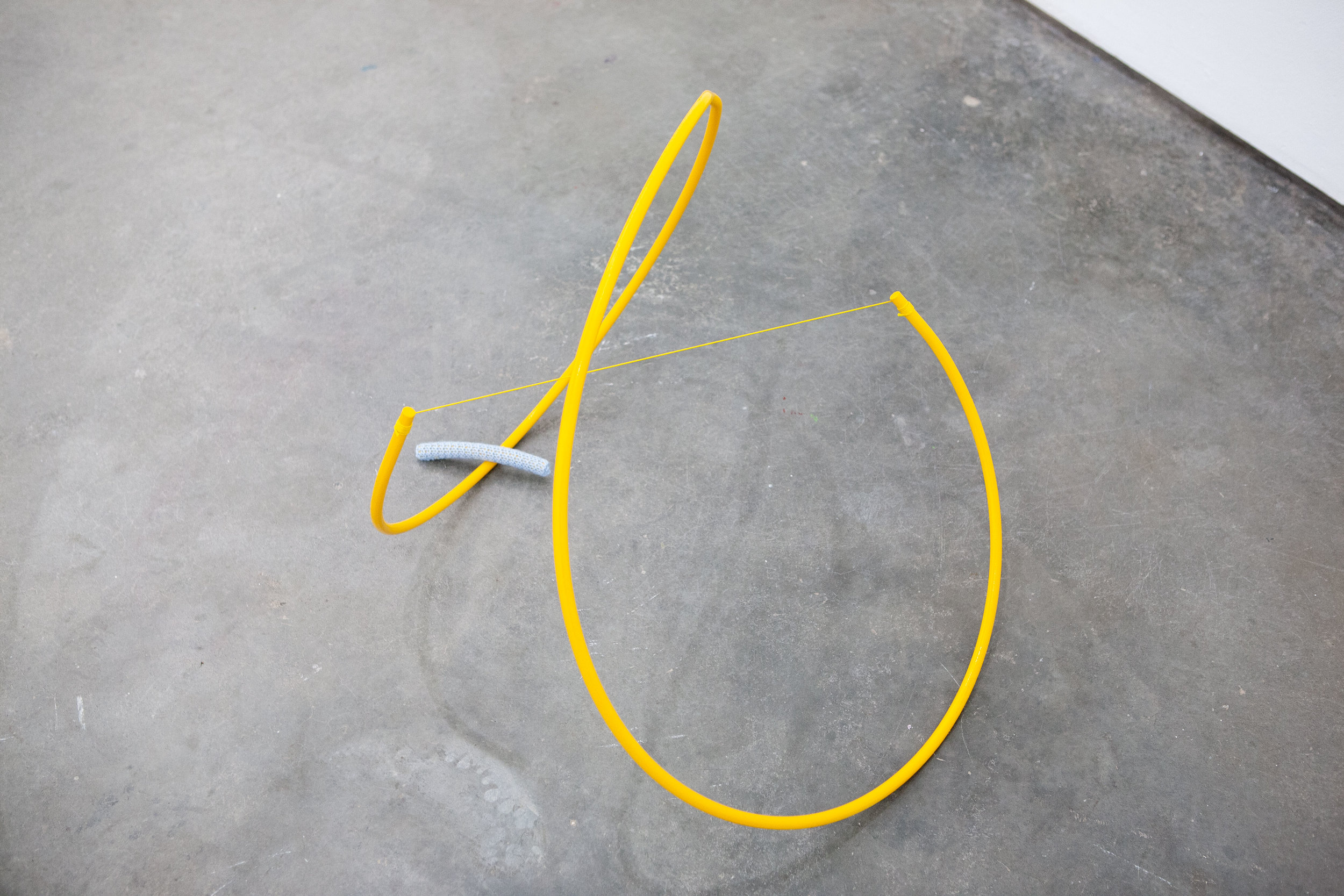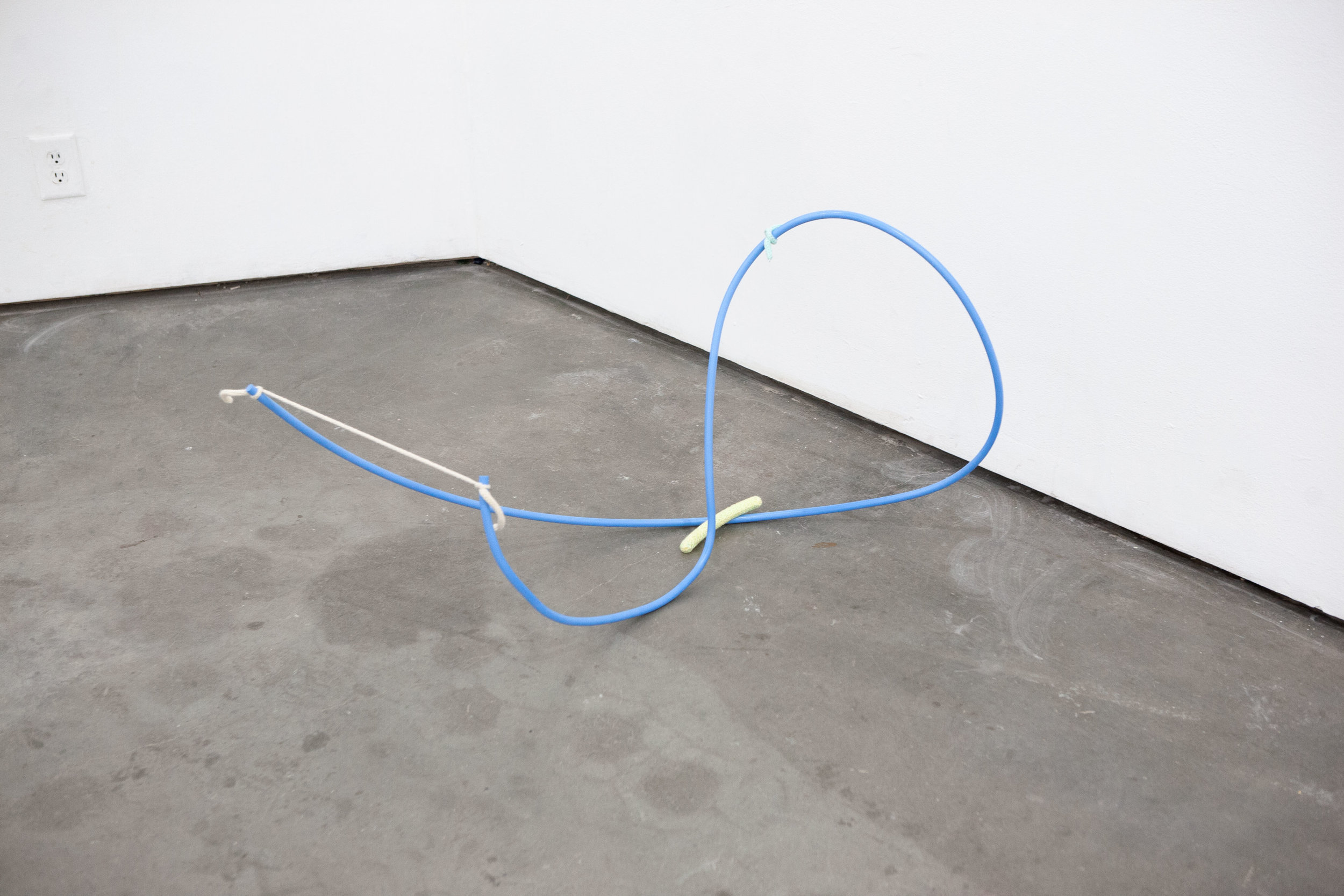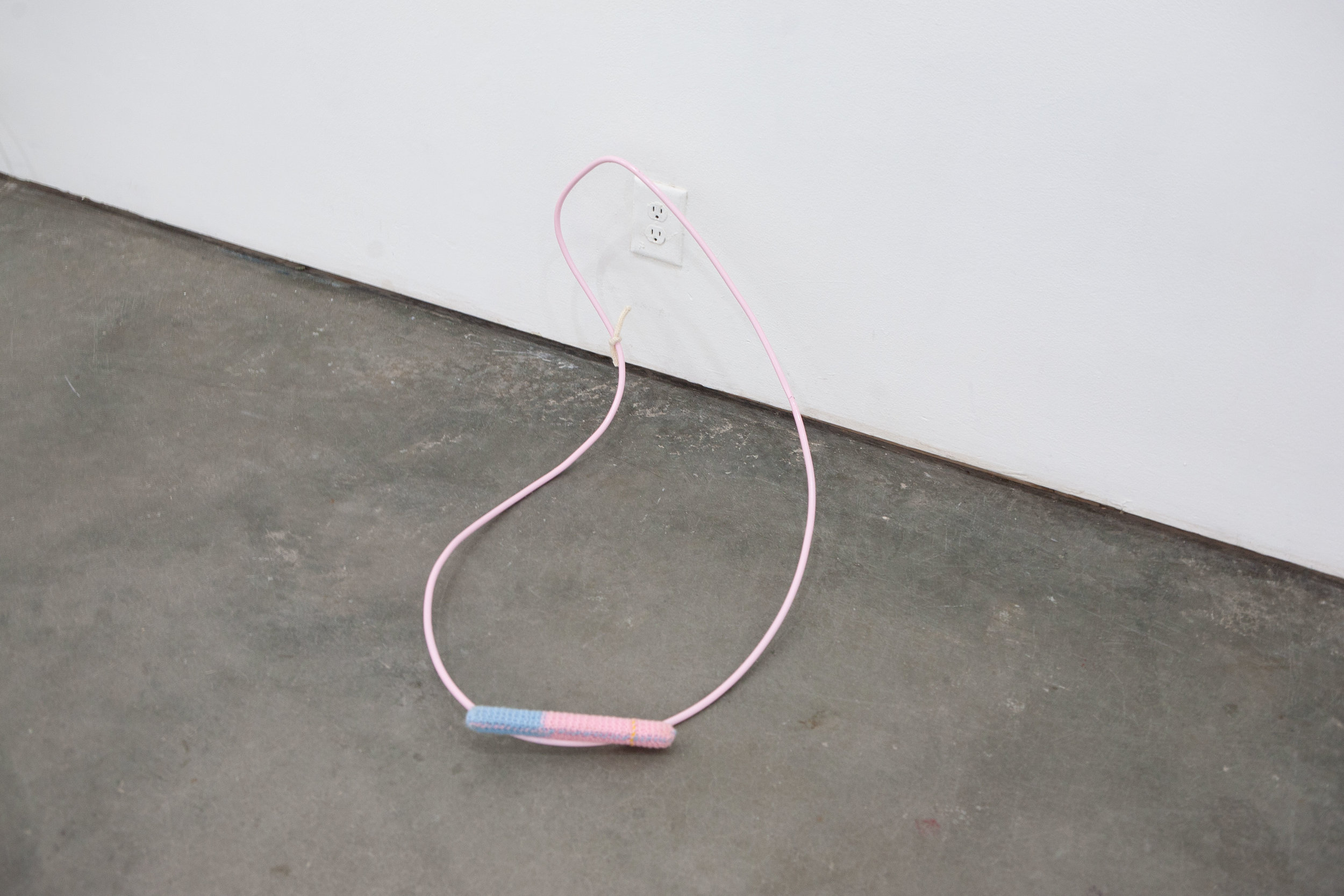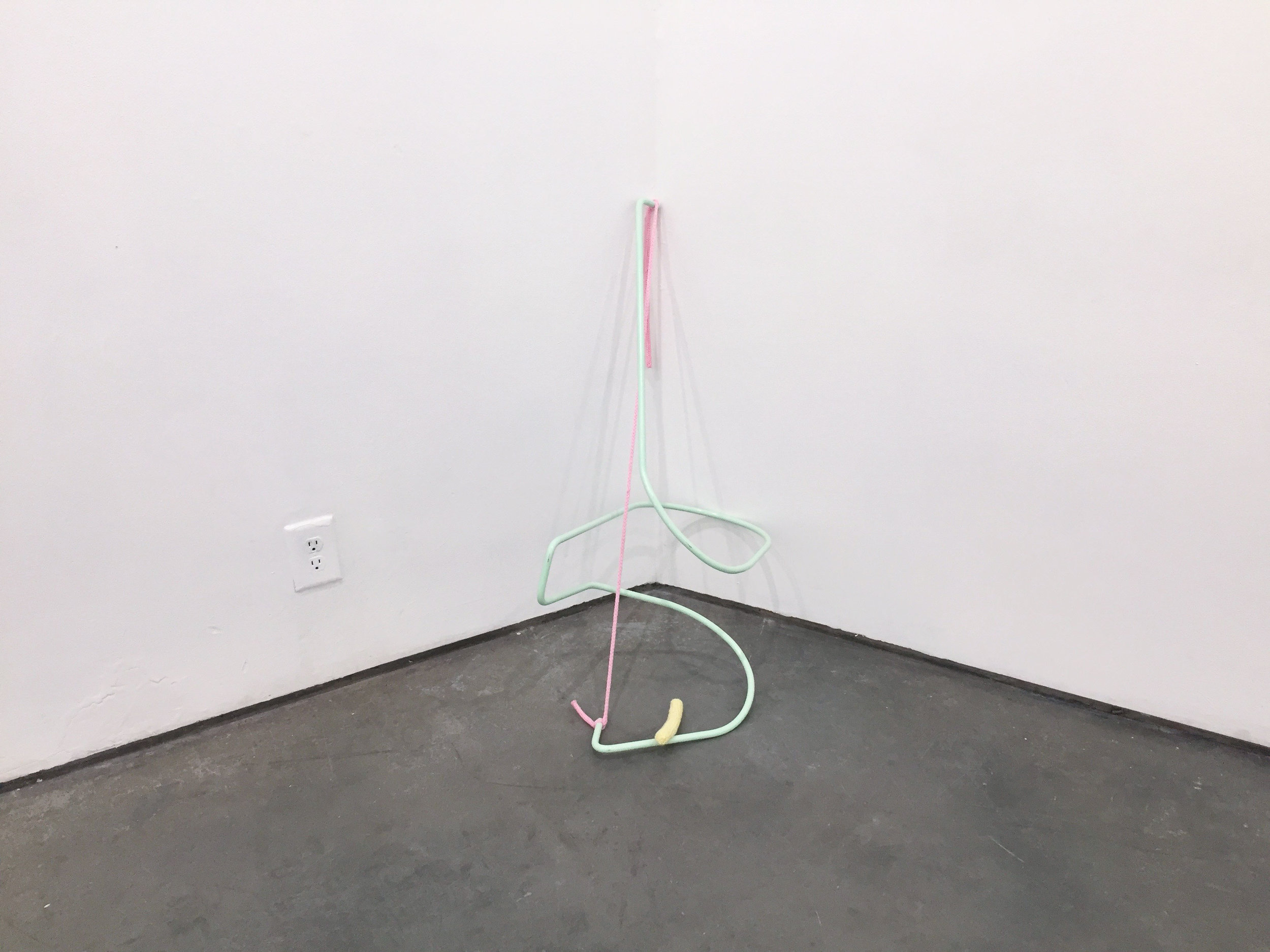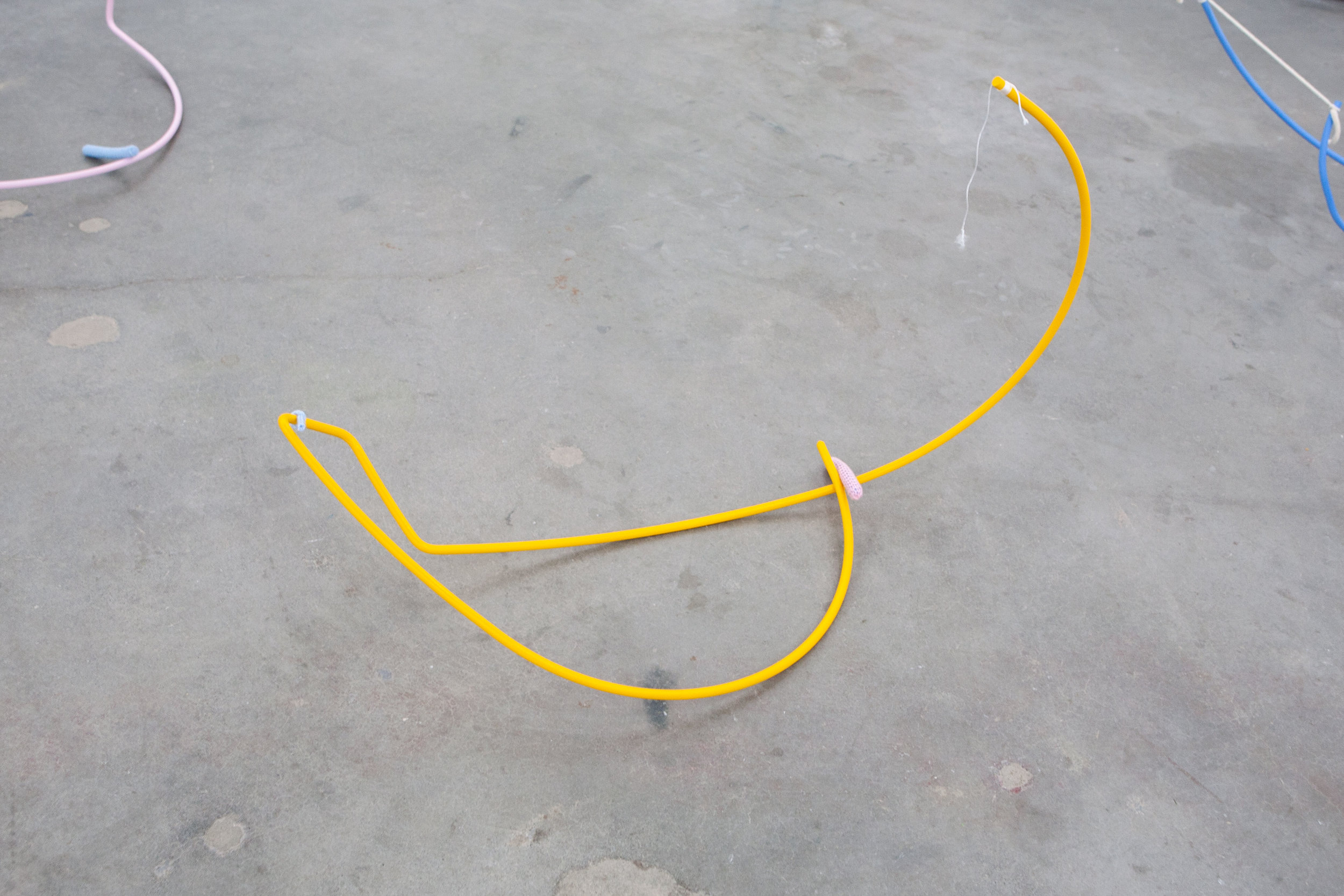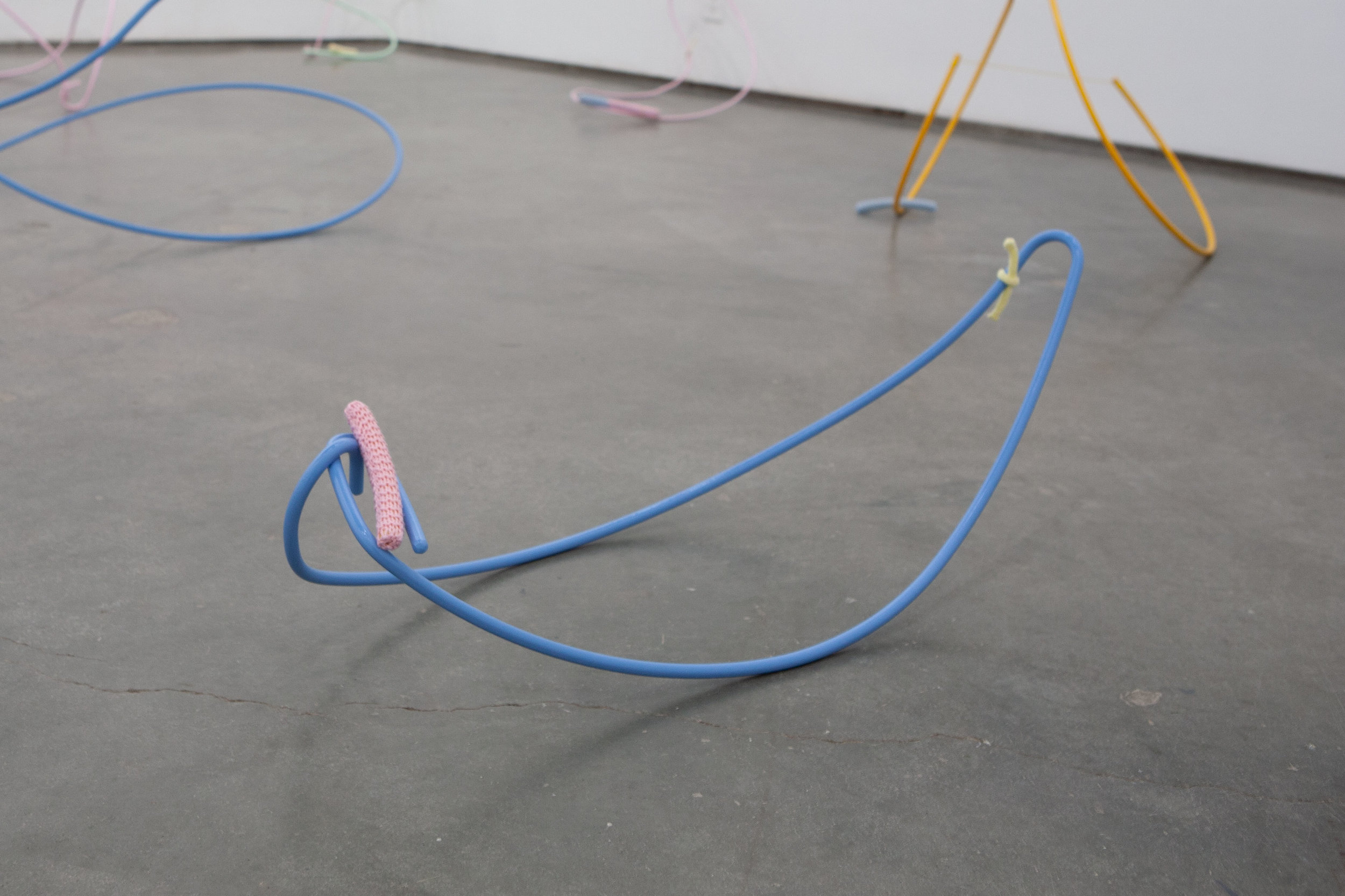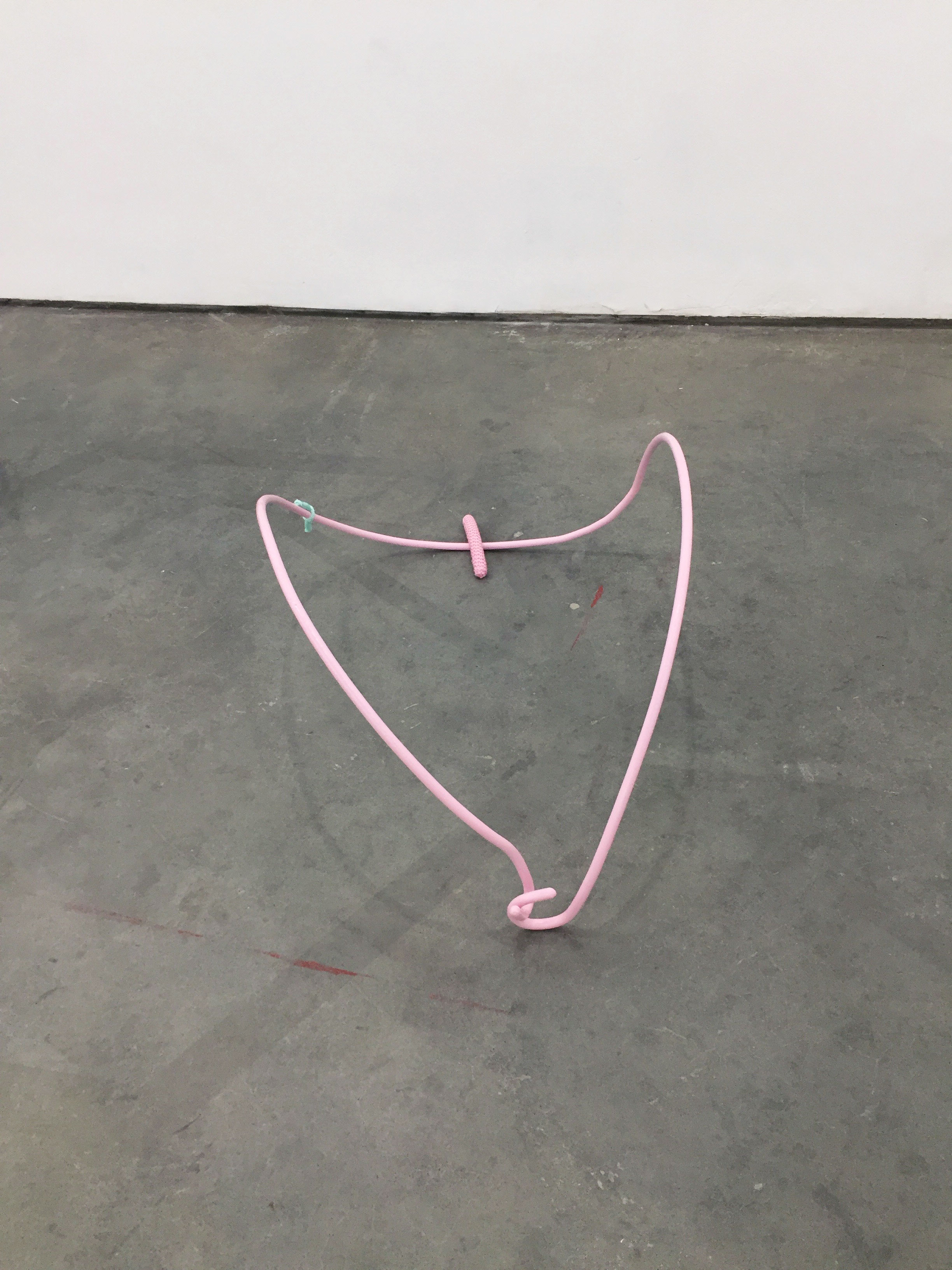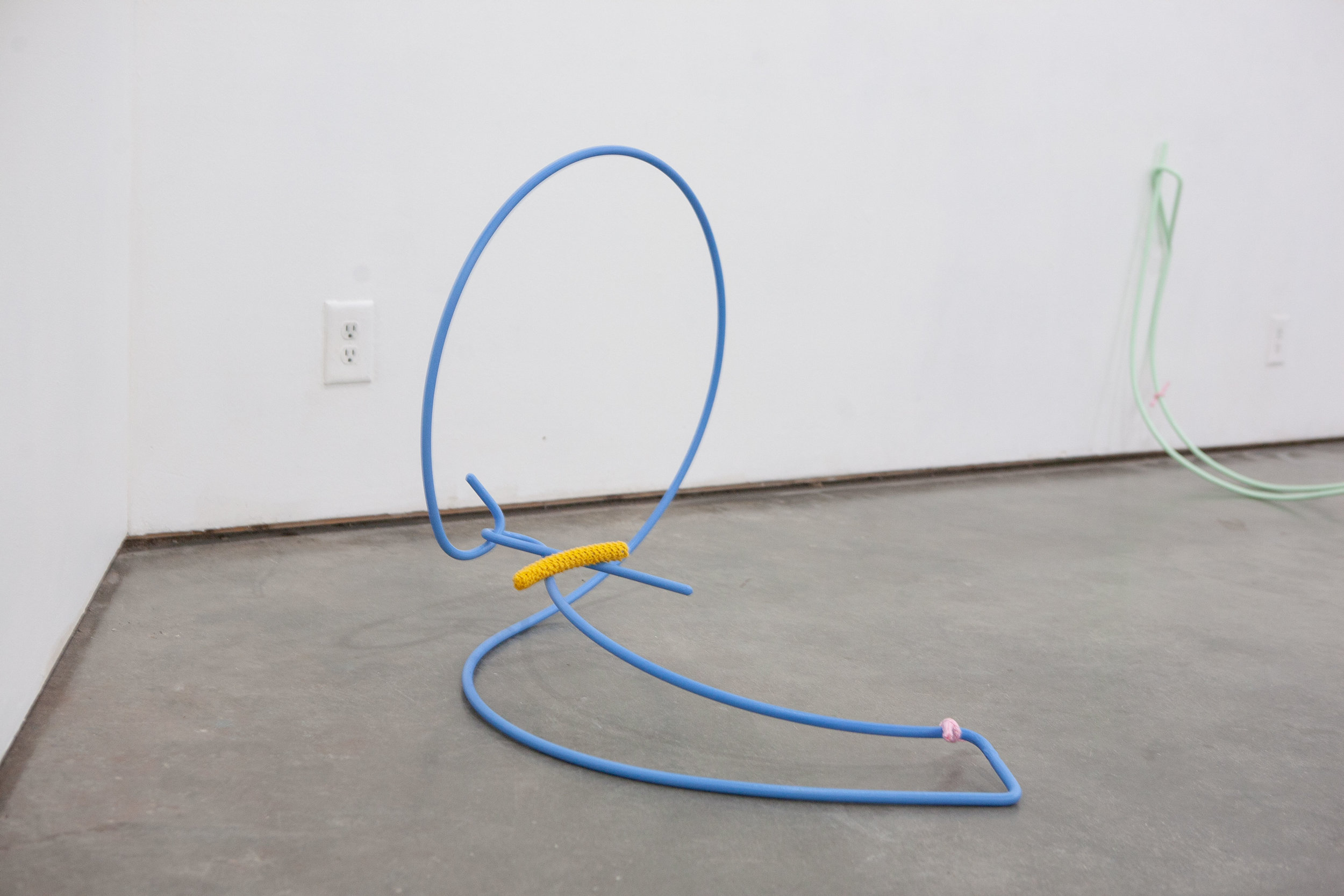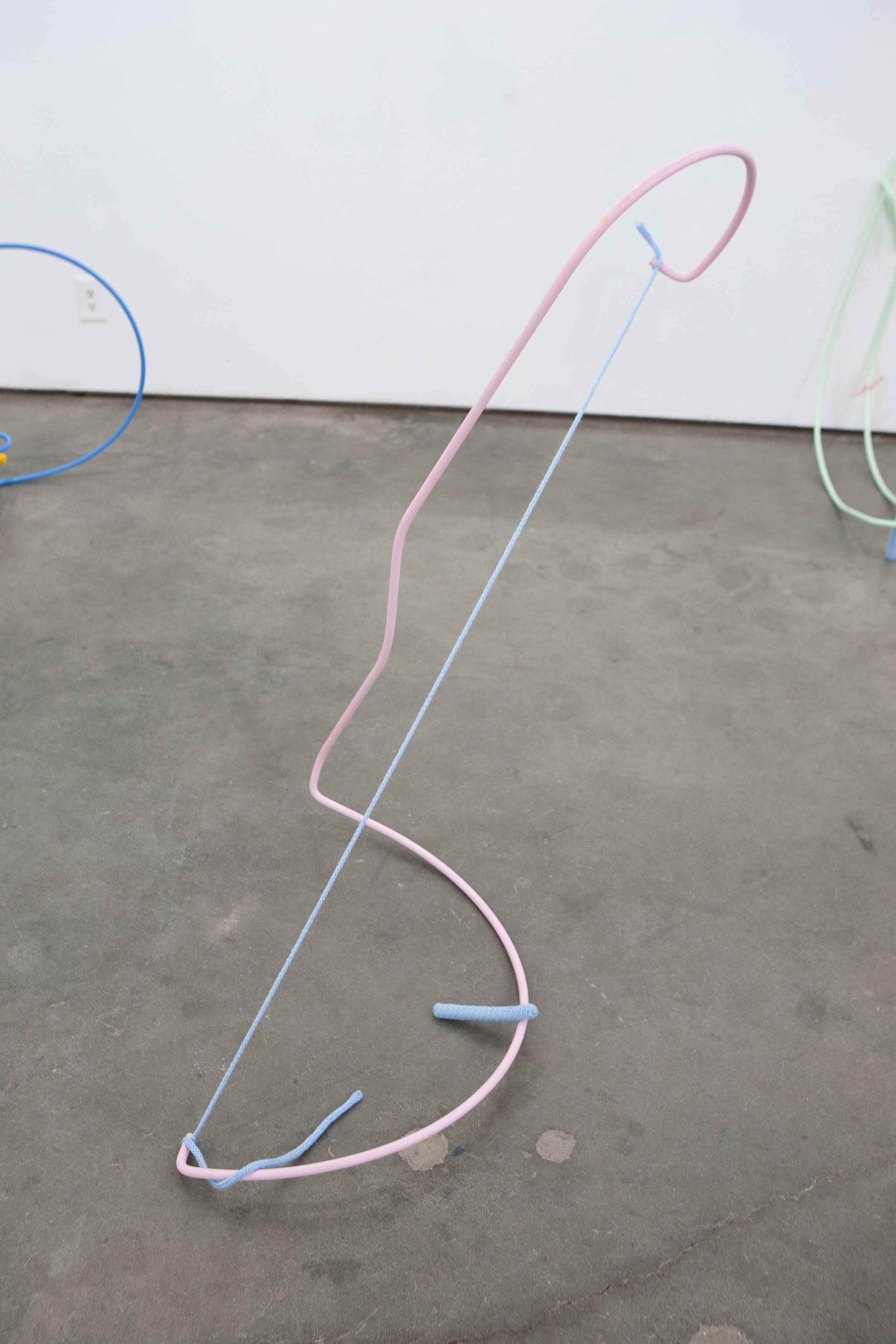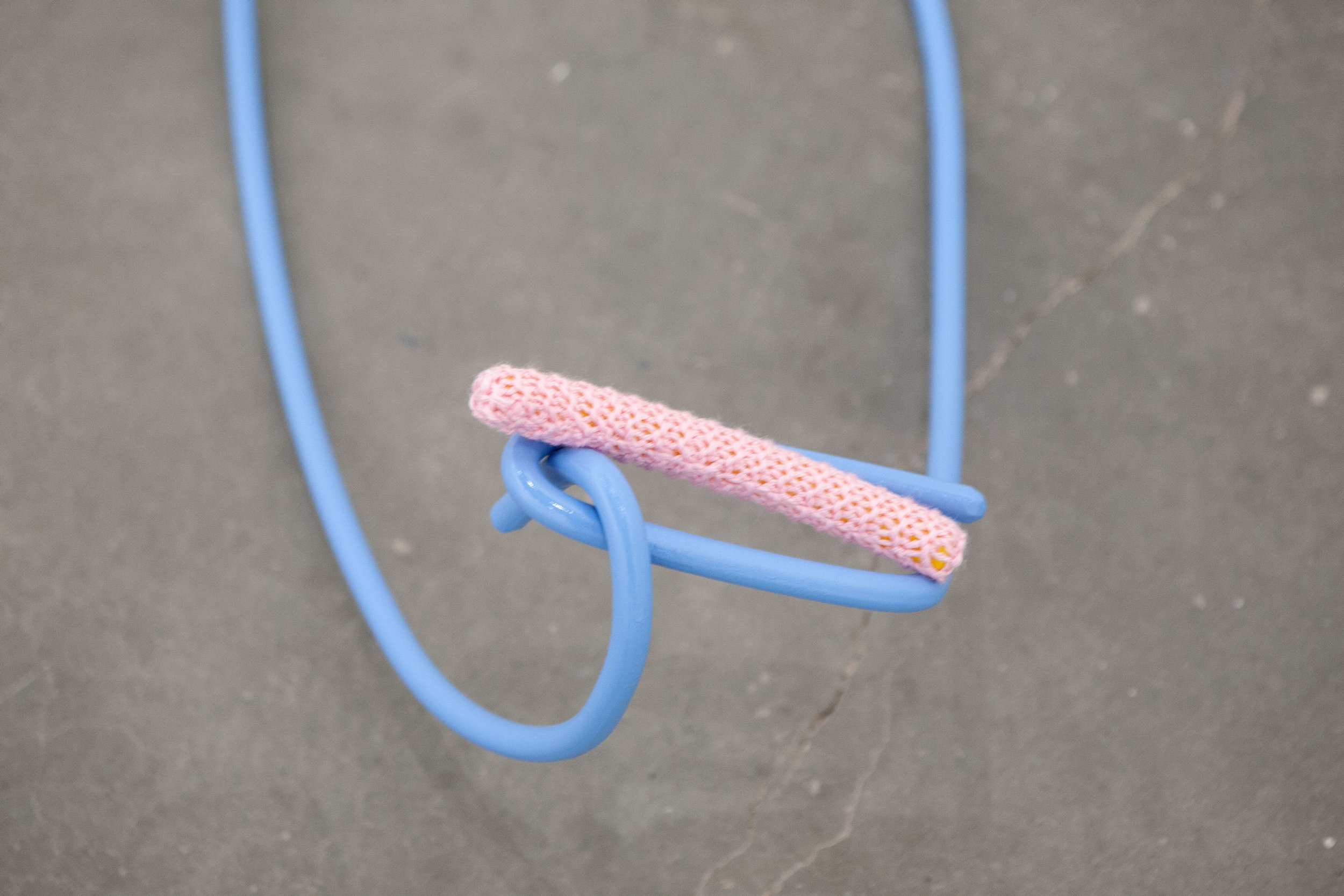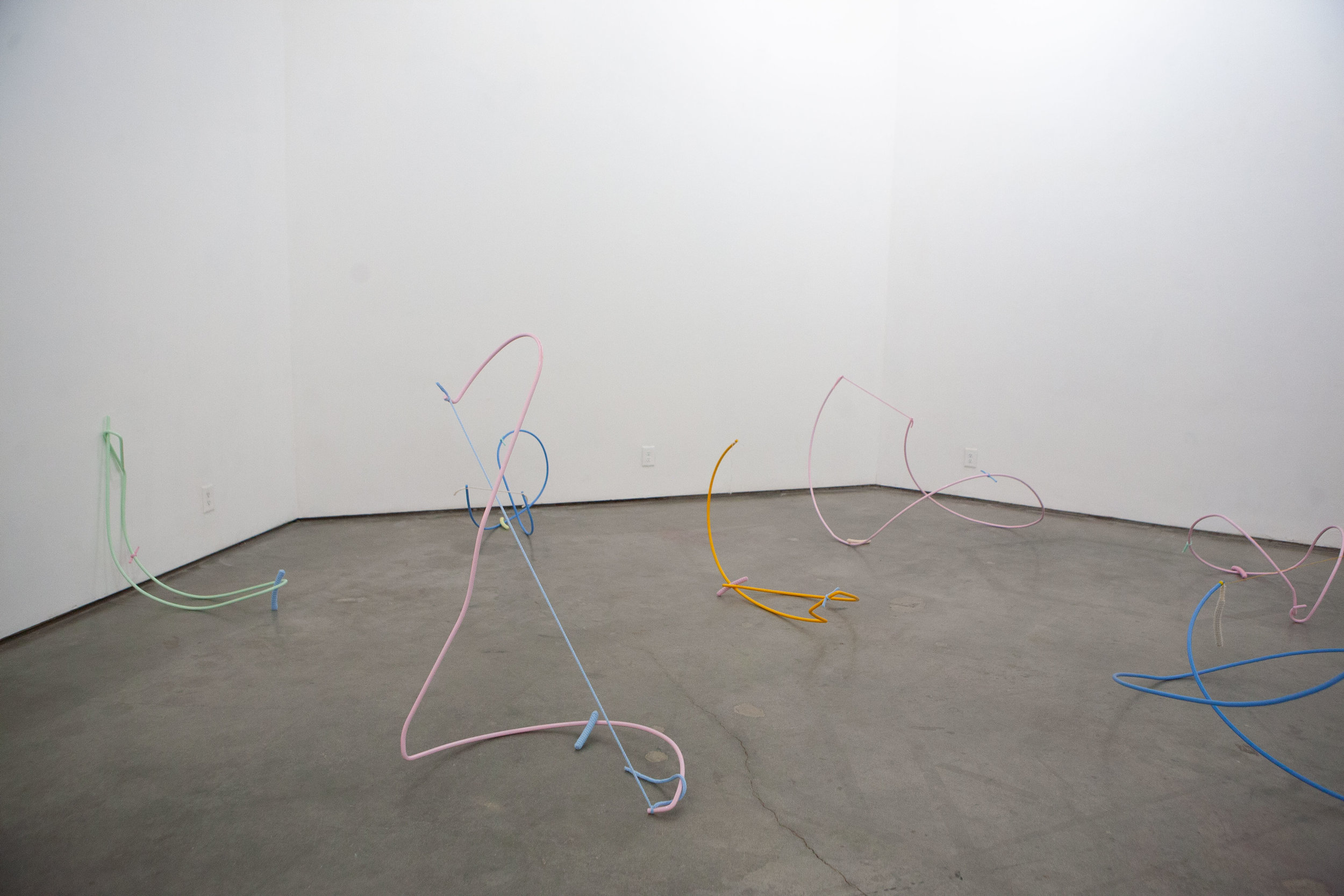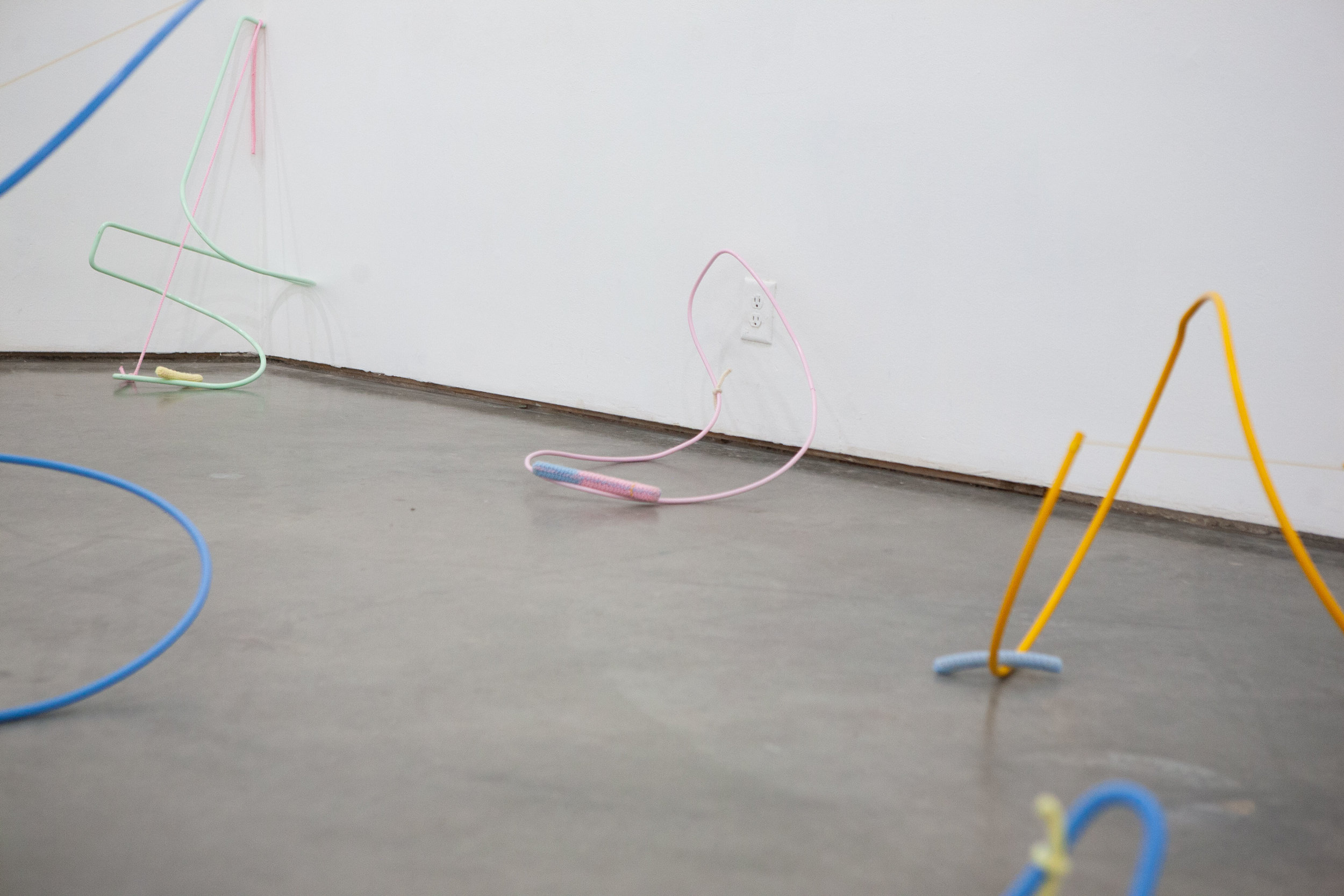The body of work entitled “Transitional Objects” invites playfulness and interaction with the viewer’s body, mind, and eyes. The choice of color palette and use of line direct eyes and bodies through the space, encouraging a child-like exploration to transition the viewer between childhood and adulthood. According to the research of Donald W. Winnicott, transitional objects are usually a physical objects like a doll, teddy bear, or blanket that takes the place of the mother’s breast for the first time as a “not-me” possession. This is the first time in a child’s life that they realize the mother is not part of them, therefore recognizing they are a dependent creature instead of an independent creature that included the mother’s warmth and food. The transitional object serves as a comfort or security object to assuage the separation anxiety and establish the child’s sense of independence. The viewer confronts firsthand the scale and weight of the objects with interaction that causes movement, sound, and response.
Reference: Winnicott, Donald W., “Transitional Objects and Transitional Phenomena—A Study of the First Not-Me Possession,” 1953.
Untitled (Tommy), 2019
Painted steel and yarn
Untitled (Matti), 2019
Painted steel, string and yarn
Untitled (Chuy), 2019
Painted steel and yarn
Untitled (Judy), 2019
Painted steel, string and yarn
Untitled (Phil), 2019
Painted steel and yarn
Untitled (Si), 2019
Painted steel and yarn
Untitled (Thaddy), 2019
Painted steel and yarn
Untitled (Petra), 2019
Painted steel, string and yarn
Untitled (Barbie), 2019
Painted steel and yarn
Untitled (Andy), 2019
Painted steel and yarn
Untitled (Jimmy), 2019
Painted steel and yarn
Untitled (Jonnie), 2019
Painted steel and yarn
Untitled (Jamie), 2019
Painted steel and yarn


